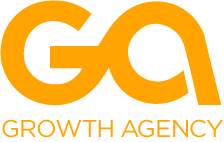Do you ever feel like your content doesn’t quite perform as well as you’d expect? Or that your landing pages aren’t converting as well as they should? Perhaps your emails aren’t generating the conversions they once did?
If you feel that your results could be refined and your sales could be taken up a gear, you may be missing out on a crucial ingredient for success. The art of knowing – really knowing – your audience.
Taking away the guesswork means that all your marketing, advertising and website messaging can be precisely targeted at your prospective customers. It can speak to their real issues and clearly communicate how you can solve their problems and add value to their day-to-day lives. It also means that you can better personalise your marketing activity to meet your customer needs. This is more critical than ever.
According to McKinsey, the closer you can get to your customer, the bigger the gains you can expect to make. This perhaps isn’t surprising when you consider that 76% of consumers say they’re frustrated by brands who don’t offer them a personalised service.
So, how do you build a deeper understanding of your audience and what makes them tick?
1. Conduct customer surveys
What better way to learn about consumer preferences, dislikes and needs than directly from the horse’s mouth? Regularly conducting customer surveys is an incredibly useful way of gathering timely, real world insight. Surveys are an especially useful way to gauge sentiment, so they can be invaluable when developing new products or services or exploring how a particular part of your service – for example shipping or customer service – is being received.
Surveys aren’t just useful to your business, they’re valued by consumers too, with 89% saying they want to provide feedback to the brands and businesses they do business with, according to Microsoft’s Global State of Customer Service report
To ensure your customer surveys yield useful data:
· Permit survey responses to remain anonymous.
· Ask as few questions as possible to gather the information you require.
· Use a mix of open and closed questions, with sliding scales such as ‘strongly agree’ and ‘somewhat agree’ to really dig deep into sentiment.
· Have a clear focus.
· Have clear questions which aren’t wordy, biased, or leading.
· To boost participation, offer an incentive such as a free shipping code or entrance into a prize draw.
2. Monitor your social channels
Few places are as packed with opinions, complaints, likes and dislikes as social media. This makes it a treasure trove of insight – but if you know where to look and how to listen.
Manually scrolling social media all day isn’t a great use of your time. And you’re likely to miss comments that could be useful. Here’s where digital tools can be a real time saver and make future analysis easier, too.
A social media monitoring tool such as Hootsuite can automate the process of identifying posts which talk about your brand. You’ll see a list of all mentions in one place, making it easier to gauge sentiment. To make the most of social media for customer insights:
· Regularly monitor your brand channels. Study which kind of posts and topics receive the most interactions from your audience.
· Keep an eye on comments and direct messages. Look for recurring themes, pain points or complaints.
· Use a social media listening tool to see the bigger picture.
· Study competitor social profiles. What kind of comments, compliments and criticisms are they receiving? How does that compare with your own?
3. Host Focus Groups
Another great way to gather wide-ranging understanding of your customers and what makes them tick is to host a focus group. These sessions see a small number of customers invited to a group meeting, where they’ll share their opinions with you.
Focus groups are especially useful to gather feedback and opinions before you launch something. If you have a new product or service in the pipeline, asking a representative group of customers for their thoughts can help you refine that product or service before it launches, giving it a much better chance of success.
To ensure you get the most from a focus group:
· Ensure a good mix of customers are invited to participate.
· Include both past and present customers.
· Prepare questions and topics of discussion upfront.
· Appoint a moderator to keep things focused and on track.
· Ensure you take notes or record the session (with permission from participants) so you can revisit comments later.
4. Review your website analytics
If you’re especially keen to create content that your audience can’t get enough of, your advertising and website analytics should provide you with a wealth of information to make data-driven decisions moving forwards.
From your data, you should be able to collate a list of likes and dislikes:
· Which pieces of content generate the most impressions?
· Which pages have the highest and lowest bounce rates?
· Which pages have the least impressions?
· Which sources are directing the most traffic to your website?
· Which pages are generating more conversions?
5. Study your sales data
Sales data analysis will also tell you a lot about your customers and their buying habits. You can use this to identify patterns of behaviour, such as frequency of purchasing, products commonly purchased together and so on. There’re myriad ways you can use this knowledge:
· To make more relevant product recommendations to customers.
· To send timely reminders to replenish products based on their usual buying schedule.
· To send more appropriate special offers and discounts.
· To inform your content strategy.
Building a better understanding of your target audience is an ongoing task. It isn’t something that can be rushed and there are no shortcuts to achieving a useful level of insight. With our exceptional technical and data capabilities, we can help you eke out every drop of insight from your customer interactions and then use that insight to grow your business. Contact us now to find out more.


